Abstract
Horse anti-rabbit thymus cell serum (HARTS) was obtained by immunizing a horse with rabbit thymocytes intravenously at weekly intervals for 3 weeks. The horse was bled 2 weeks later and the antiserum was analysed for its cytotoxic activity with respect to the lymphocytes of the various lymphoid organs. It was demonstrated that the cytotoxic activity of the antiserum was several orders of magnitude greater for thymus cells than for cells of the other organs tested. Only thymus and lymph node cells were capable of absorbing the thymocytotoxic activity of the antiserum; however, ten to fifteen times as many lymph node cells as thymus cells were required to neutralize the thymocytotoxic activity of the serum. Absorption of the antiserum with the cells of the other lymphoid organs (spleen, bone marrow, appendix, sacculus rotundus, Peyer's patches and circulating leucocytes) resulted in a slight but significant decrease in the thymocytotoxic activity. At no time was the thymocytotoxic activity completely absorbed with cells of these organs. The cytotoxic activity of the antiserum with respect to the cells of the different lymphoid organs other than the thymus could be abolished following absorption of the antiserum with the cells of any of the lymphoid organs. On the basis of our data, it is concluded that (a) the thymocytes possess two groups of antigens—one thymocyte specific and one common to all rabbit lymphocytes and (b) only the lymph nodes of all the lymphoid organs other than the thymus possess significant numbers of thymus-derived or T-cells. However, the proportion of these cells in the lymph node does not exceed 7–10 per cent, a figure much lower than that found in the lymph nodes of the mouse. Less than 1 per cent of the circulating lymphocytes in the rabbit are T-cells.
Full text
PDF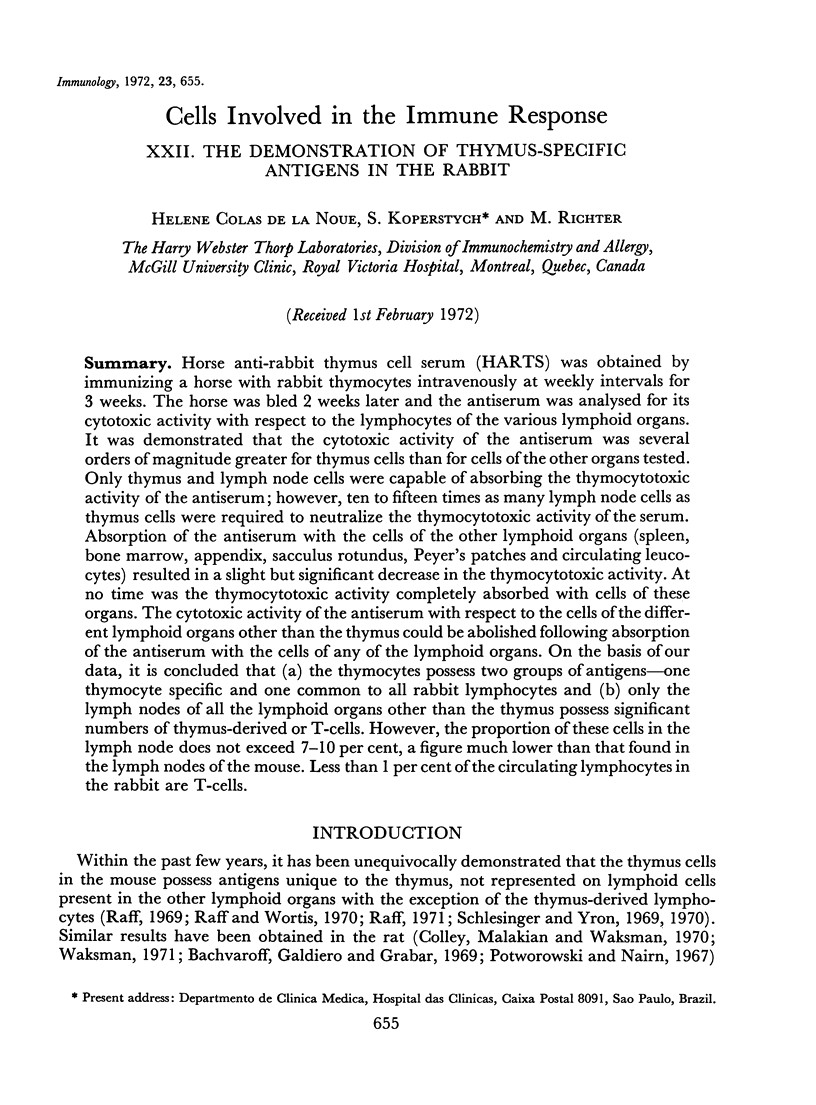
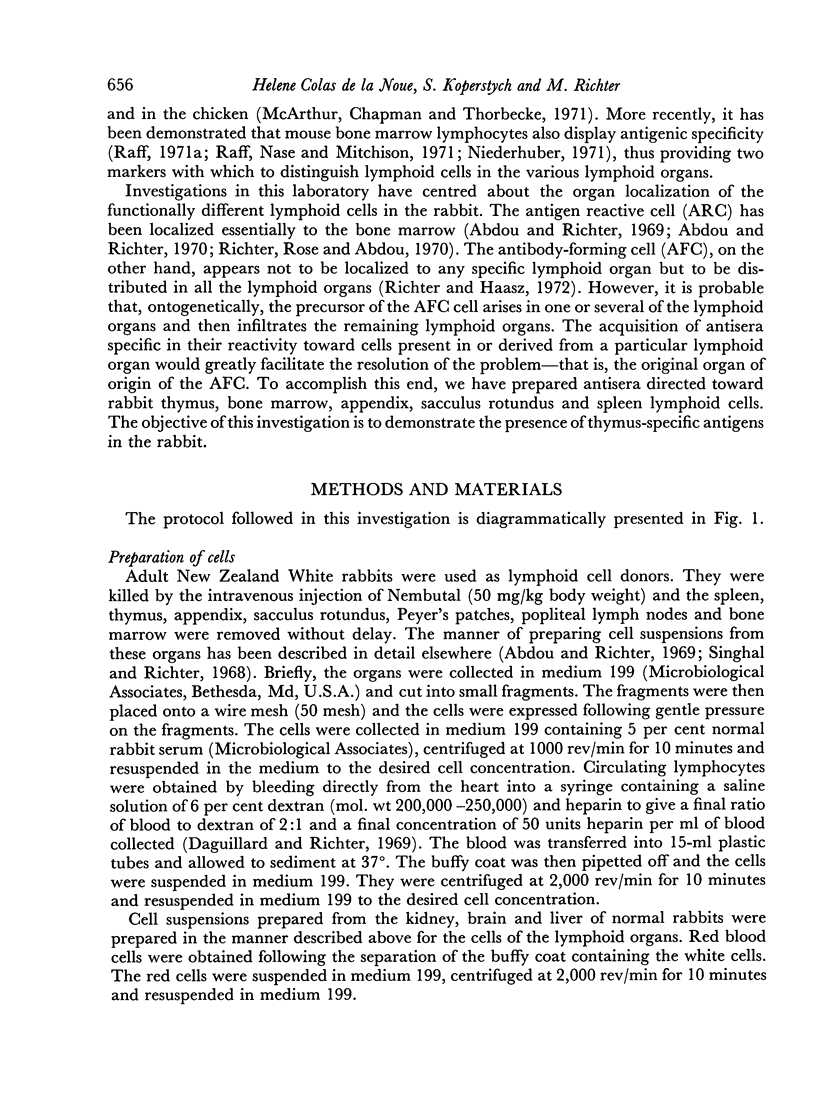
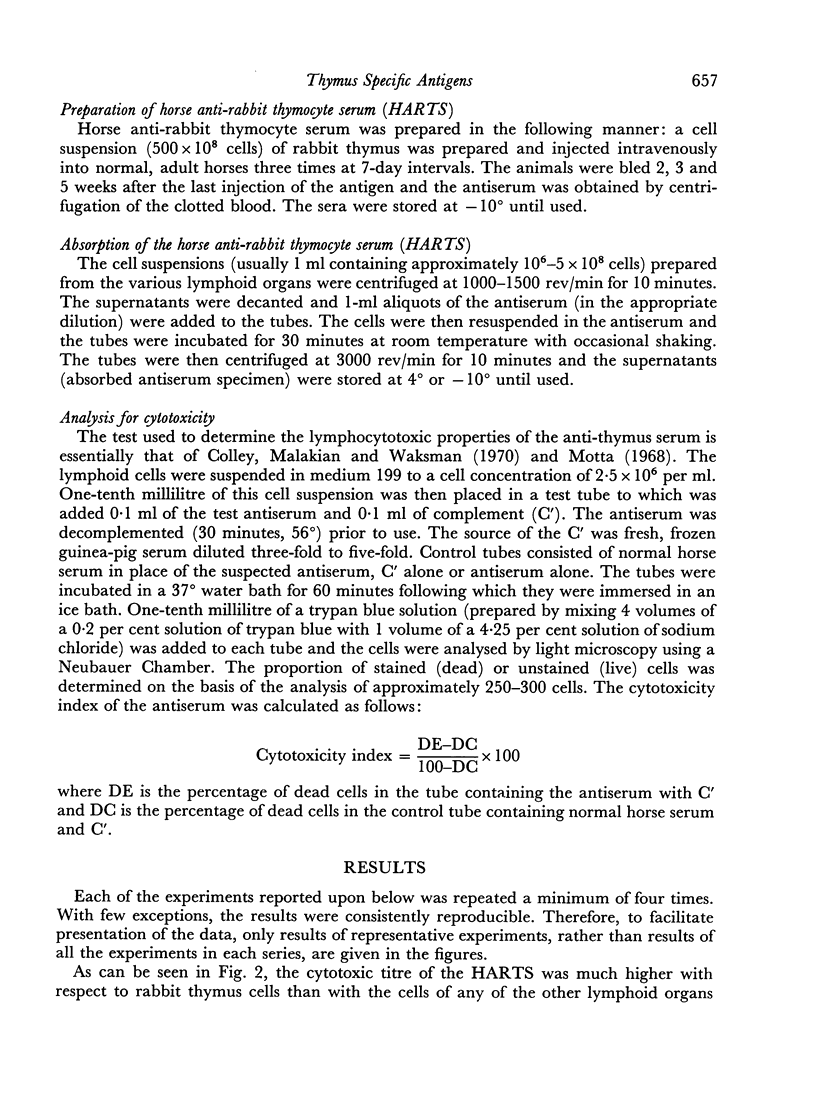
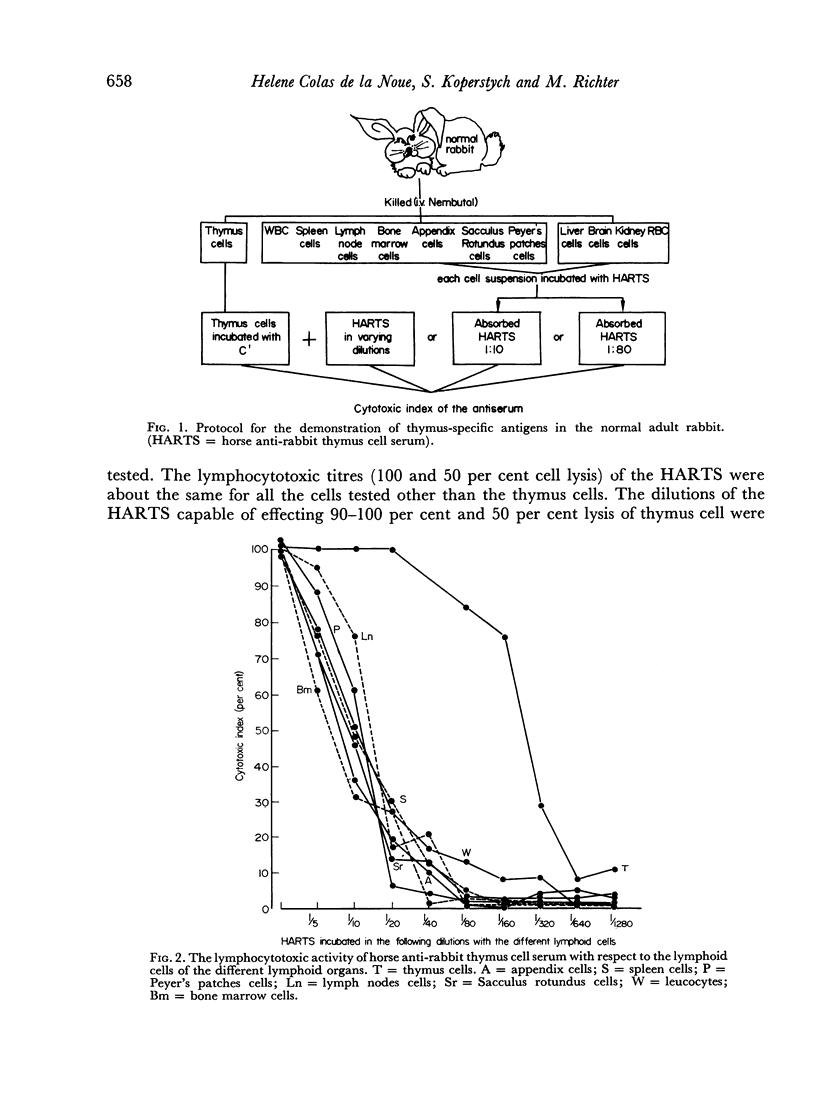
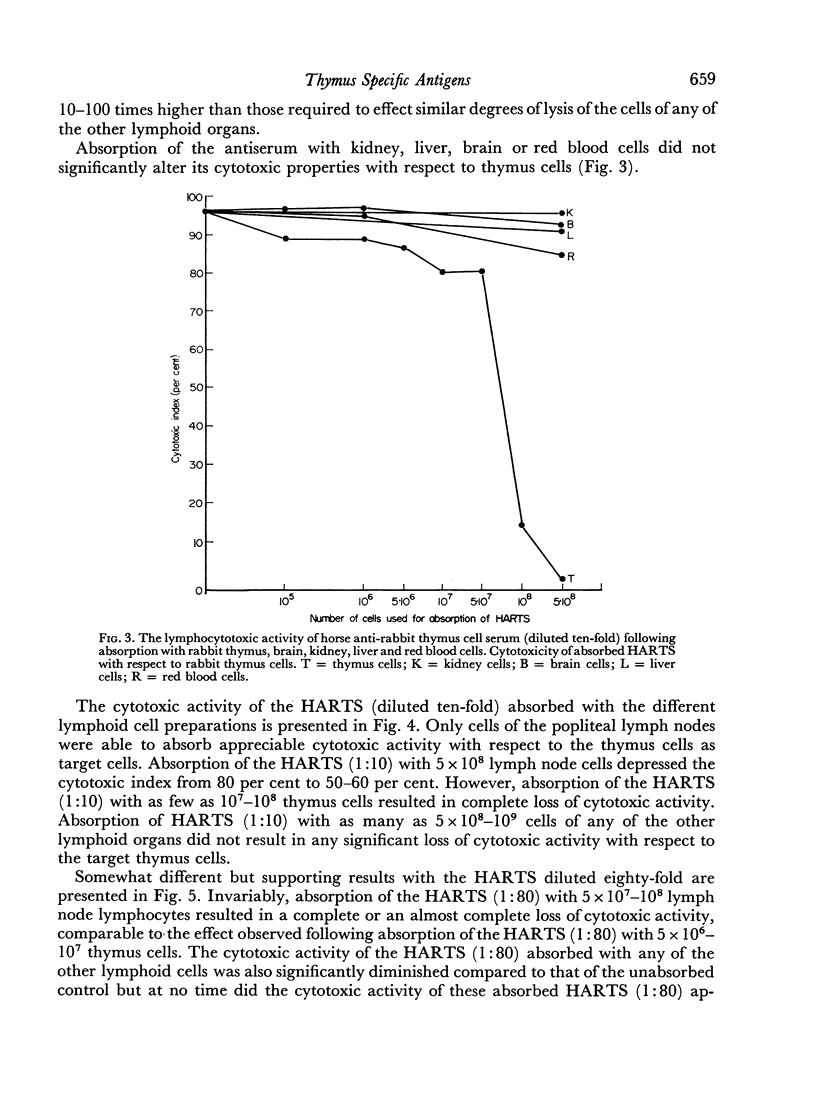
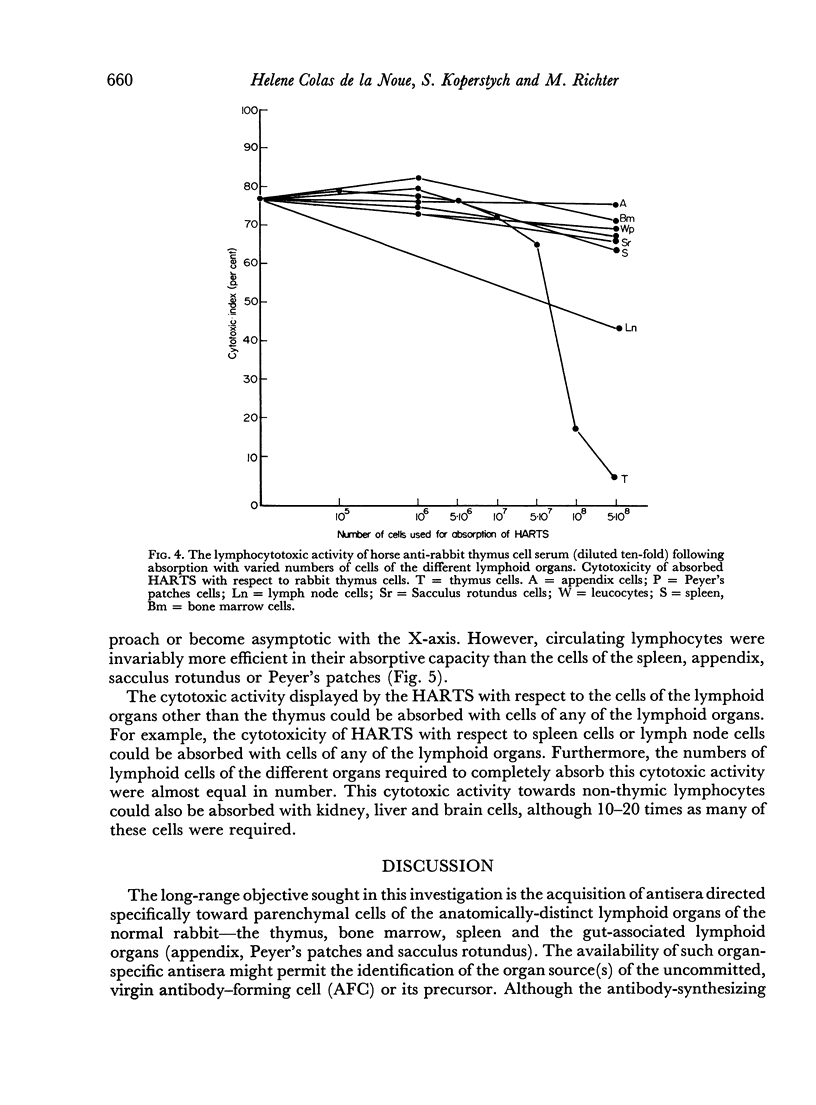
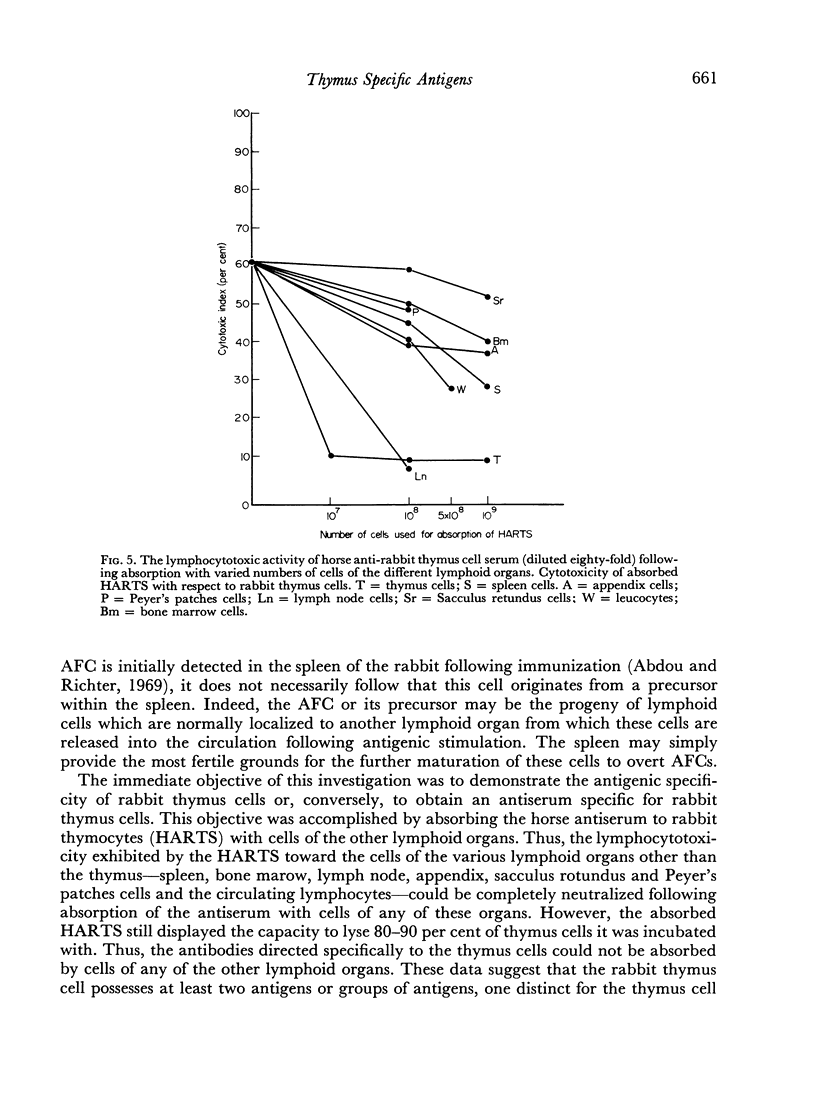
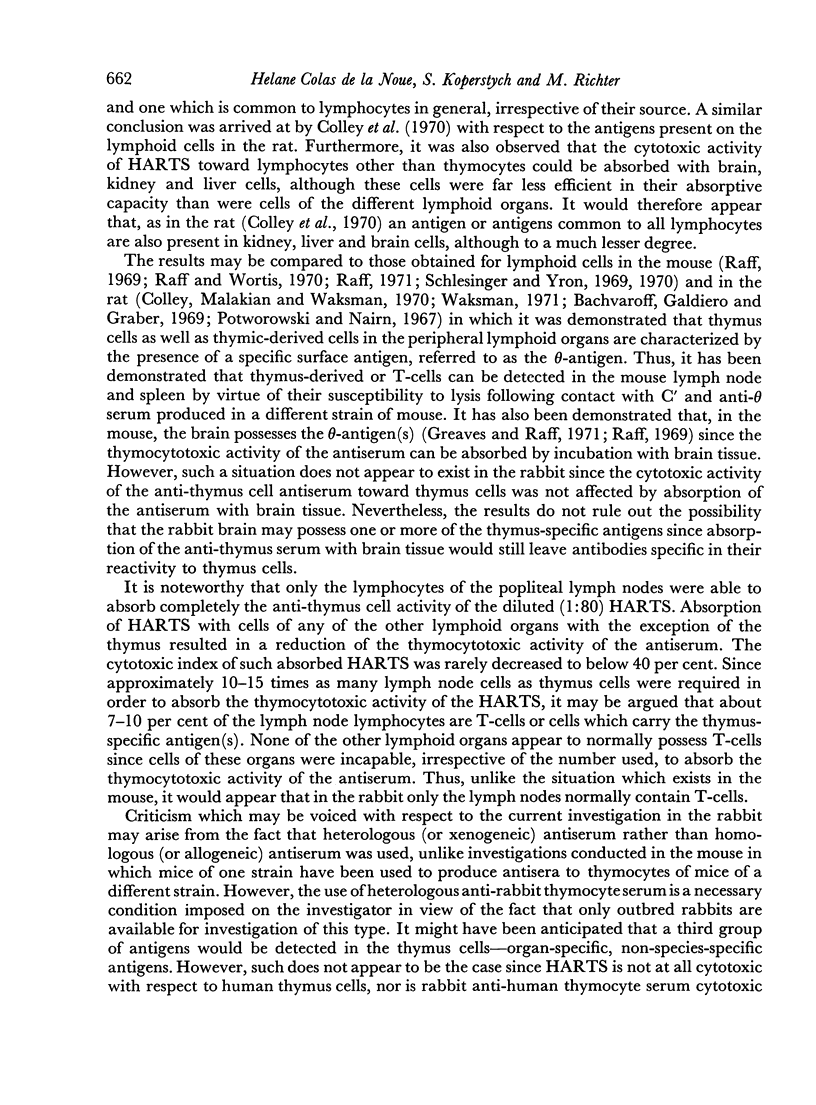
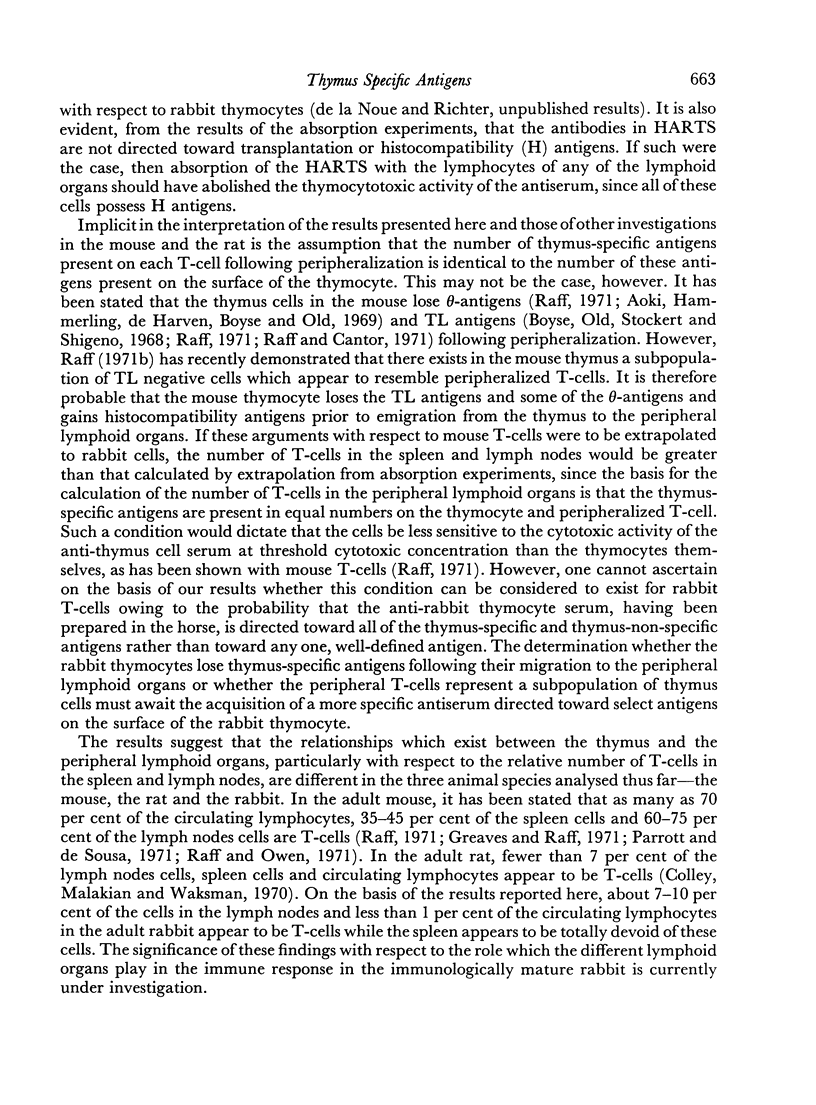
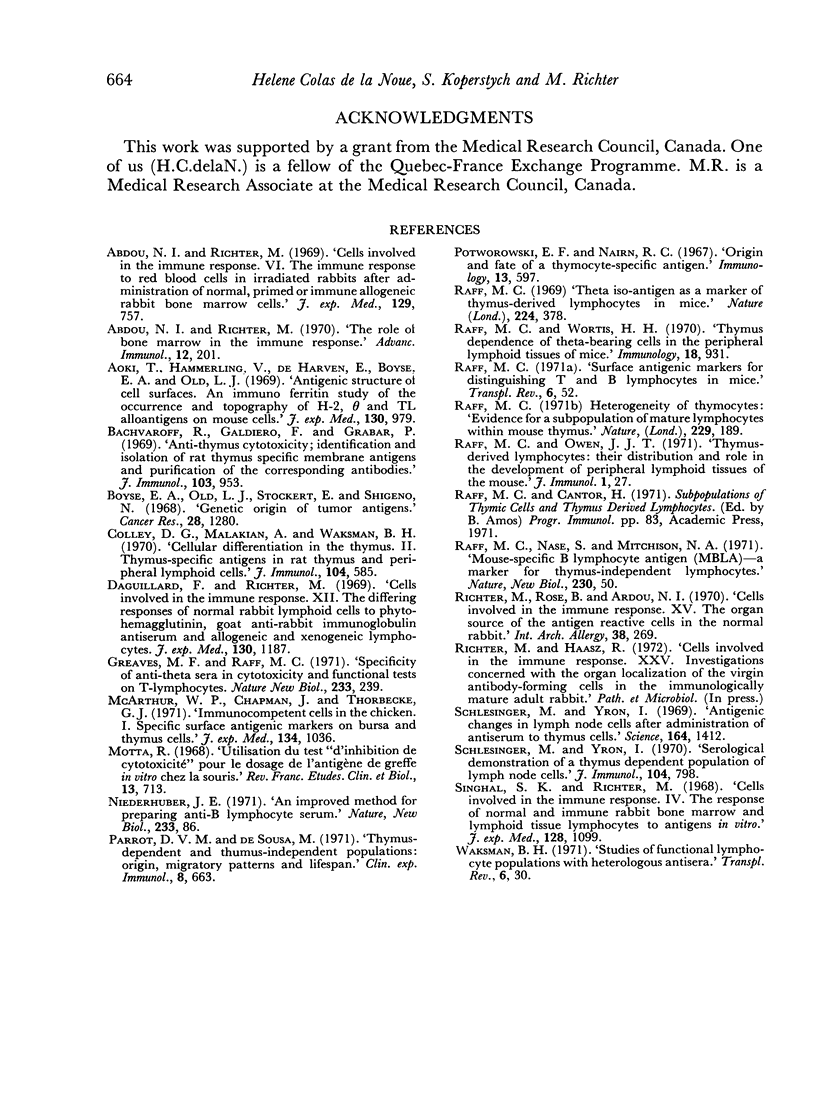
Selected References
These references are in PubMed. This may not be the complete list of references from this article.
- Abdou N. I., Richter M. Cells involved in the immune response. VI. The immune response to red blood cells in irradiated rabbits after administration of normal, primed, or immune allogeneic rabbit bone marrow cells. J Exp Med. 1969 Apr 1;129(4):757–774. doi: 10.1084/jem.129.4.757. [DOI] [PMC free article] [PubMed] [Google Scholar]
- Abdou N. I., Richter M. The role of bone marrow in the immune response. Adv Immunol. 1970;12:201–270. doi: 10.1016/s0065-2776(08)60170-4. [DOI] [PubMed] [Google Scholar]
- Aoki T., Hämmerling U., De Harven E., Boyse E. A., Old L. J. Antigenic structure of cell surfaces. An immunoferritin study of the occurrence and topography of H-2' theta, and TL alloantigens on mouse cells. J Exp Med. 1969 Nov 1;130(5):979–1001. doi: 10.1084/jem.130.5.979. [DOI] [PMC free article] [PubMed] [Google Scholar]
- Bachvaroff R., Galdiero F., Grabar P. Anti-thymus cytotoxicity: identification and isolation of rat thymus-specific membrane antigens and purification of the corresponding antibodies. J Immunol. 1969 Nov;103(5):953–961. [PubMed] [Google Scholar]
- Boyse E. A., Old L. J., Stockert E., Shigeno N. Genetic origin of tumor antigens. Cancer Res. 1968 Jul;28(7):1280–1287. [PubMed] [Google Scholar]
- Daguillard F., Richter M. Cells involved in the immune response. XII. The differing responses of normal rabbit lymphoid cells to phytohemagglutinin, goat anti-rabbit immunoglobulin antiserum and allogeneic and xenogeneic lymphocytes. J Exp Med. 1969 Nov 1;130(5):1187–1208. doi: 10.1084/jem.130.5.1187. [DOI] [PMC free article] [PubMed] [Google Scholar]
- McArthur W. P., Chapman J., Thorbecke G. J. Immunocompetent cells of the chicken. I. Specific surface antigenic markers on bursa and thymus cells. J Exp Med. 1971 Oct 1;134(4):1036–1045. doi: 10.1084/jem.134.4.1036. [DOI] [PMC free article] [PubMed] [Google Scholar]
- Motta R. Utilisation du test "d'inhibition de cytotoxicité" pour le dosage de l'antigène de greffe "in vitro" chez la souris. Rev Fr Etud Clin Biol. 1968 Aug-Sep;13(7):713–720. [PubMed] [Google Scholar]
- Niederhuber J. E. An improved method for preparing anti-B lymphocyte serum. Nat New Biol. 1971 Sep 15;233(37):86–87. doi: 10.1038/newbio233086a0. [DOI] [PubMed] [Google Scholar]
- Parrott D. M., De Sousa M. Thymus-dependent and thymus-independent populations: origin, migratory patterns and lifespan. Clin Exp Immunol. 1971 May;8(5):663–684. [PMC free article] [PubMed] [Google Scholar]
- Potworowski E. F., Nairn R. C. Origin and fate of a thymocyte-specific antigen. Immunology. 1967 Dec;13(6):597–602. [PMC free article] [PubMed] [Google Scholar]
- Raff M. C., Nase S., Mitchison N. A. Mouse specific bone marrow-derived lymphocyte antigen as a marker for thymus-independent lymphocytes. Nature. 1971 Mar 5;230(5288):50–51. doi: 10.1038/230050a0. [DOI] [PubMed] [Google Scholar]
- Raff M. C., Owen J. J. Thymus-derived lymphocytes: their distribution and role in the development of peripheral lymphoid tissues of the mouse. Eur J Immunol. 1971 Jan;1(1):27–30. doi: 10.1002/eji.1830010105. [DOI] [PubMed] [Google Scholar]
- Raff M. C. Surface antigenic markers for distinguishing T and B lymphocytes in mice. Transplant Rev. 1971;6:52–80. doi: 10.1111/j.1600-065x.1971.tb00459.x. [DOI] [PubMed] [Google Scholar]
- Raff M. C., Wortis H. H. Thymus dependence of theta-bearing cells in the peripheral lymphoid tissues of mice. Immunology. 1970 Jun;18(6):931–942. [PMC free article] [PubMed] [Google Scholar]
- Raff M. Theta isoantigen as a marker of thymus-derived lymphocytes in mice. Nature. 1969 Oct 25;224(5217):378–379. doi: 10.1038/224378a0. [DOI] [PubMed] [Google Scholar]
- Richter M., Rose B., Abdou N. I. Cells involved in the immune response. XV. The organ source of the antigen reactive cells in the normal rabbit. Int Arch Allergy Appl Immunol. 1970;38(3):269–281. doi: 10.1159/000230280. [DOI] [PubMed] [Google Scholar]
- Schlesinger M., Yron I. Antigenic changes in lymph-node cells after administration of antiserum to thymus cells. Science. 1969 Jun 20;164(3886):1412–1413. doi: 10.1126/science.164.3886.1412. [DOI] [PubMed] [Google Scholar]
- Schlesinger M., Yron I. Serologic demonstration of a thymus-dependent population of lymph-node cells. J Immunol. 1970 Apr;104(4):798–804. [PubMed] [Google Scholar]
- Singhal S. K., Richter M. Cells involved in the immune response. IV. The response of normal and immune rabbit bone marrow and lymphoid tissue lymphocytes to antigens in vitro. J Exp Med. 1968 Nov 1;128(5):1099–1128. doi: 10.1084/jem.128.5.1099. [DOI] [PMC free article] [PubMed] [Google Scholar]


